
1. Quick list
2. Best overall
3. Best on a budget
4. Best beginner keyboard
5. Best for kids
6. Best for pianists
7. Best for retro tones
8. Buying advice
9. How we choose
It’s fair to say that Yamaha knows a thing or two about keyboards. The Japanese company has been manufacturing instruments since the 1880s and was responsible for making 54% of the portable keyboards sold around the world in 2019. But what are the best Yamaha keyboards you can buy today, and what makes them so special?
The sheer number of Yamaha keyboards can be overwhelming for those thinking of making a purchase, so we’ve narrowed our focus down to the company’s beginner-friendly arranger keyboards (to find out what’s meant by an arranger keyboard, check out our buying advice section).
This rules out professional stage keyboards like the new CP88, digital pianos such as the P-125, Yamaha’s well-established range of synthesizers, including the MODX and the Motif, synth workstations like the Montage range, and also the wallet-busting Genos arranger keyboard.
Quick list

Pushing the portability envelope somewhat at a hefty 8.1kg, the PSR-SX600 is the lowest-priced model in Yamaha’s SX range of pro-level keyboards. Blurring the lines between a portable arranger and a proper workstation keyboard, it packs in a lot of high-end features, justifying its status as the most expensive instrument on our list.
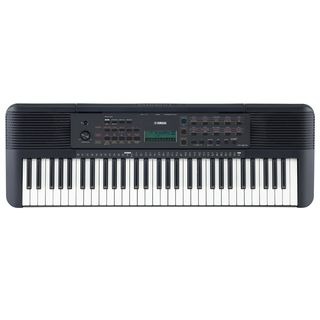
Known as the YPT-270 in some markets, the PSR-E273 is the entry-level product in Yamaha’s E-series of arranger keyboards. Its more-affordable price tag is reflected in the lack of some of the more sophisticated features found on the PSR-E373, such as velocity-sensitive keys, MIDI capability, LCD backlighting, and the ability to split and layer sounds across the keyboard.
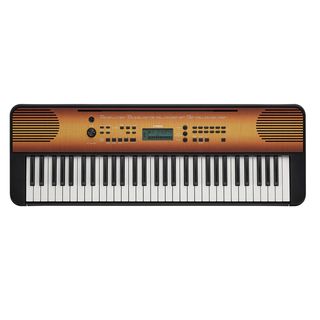
Available in two wood-effect finishes – dark walnut or maple – the PSR-E360 is one of Yamaha’s more-stylish keyboards (you can also get a plain black version). But there’s a lot of substance behind that smart exterior, with 384 voices, 130 auto-accompaniment styles and a 112-track Song Book on board.
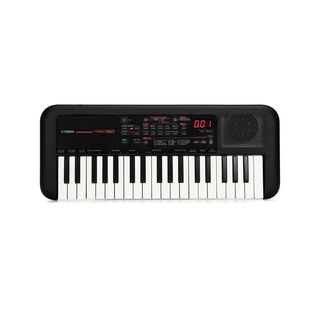
Something a little different, the PSS-A50 does not come with a standard auto-accompaniment feature. Instead, it has a phrase recorder, an arpeggiator and what Yamaha calls ‘motion effects’ – pitch, filter and modulation features that can be called up instantly by pressing a button.
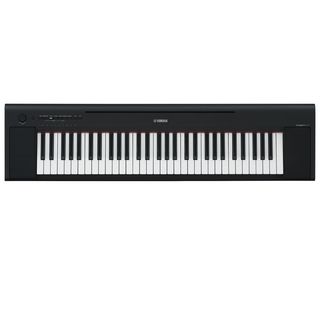
The Piaggero NP-15 – like its larger, 76-key brother the Piaggero NP-35 – is a lightweight, synth-action keyboard that delivers a lifelike, AWM-stereo-sampled piano sound. There are only 15 voices on offer, and no auto-accompaniment, but if you want something you can just walk up to, switch on and play, you won’t find anything better for the money.
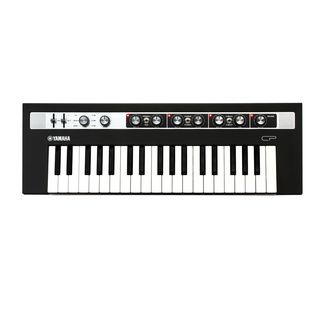
The feature set is impressive, with a bunch of retro keyboard sounds – including two types of Fender Rhodes electric piano, a Wurlitzer piano, a clavinet and a 1970s toy piano – vintage drive, tremolo, chorus, phaser, delay and reverb effects, plus 128-note polyphony.
Best Yamaha keyboard overall

Pushing the portability envelope somewhat at a hefty 8.1kg, the PSR-SX600 is the lowest-priced model in Yamaha’s SX range of pro-level keyboards. Blurring the lines between a portable arranger and a proper workstation keyboard, it packs in a lot of high-end features, justifying its status as the most expensive instrument on our list. Real-time control over a range of user-assignable settings, an informative 4.3” TFT colour LCD screen, two powerful 15W speakers and 128-note polyphony are just a few of the highlights here.
There are a staggering 850 voices on tap, 73 of which are the new Super Articulation type, giving extra authenticity to guitar, sax, trumpet, organ and string sounds. With a whopping 415 styles, a playlist organiser, accents and unison features, plus 100MB of expansion memory to load new sounds onto, the PSR-SX600 offers a whole world of musical adventure to explore.
Best budget pick

Known as the YPT-270 in some markets, the PSR-E273 is the entry-level product in Yamaha’s E-series of arranger keyboards. Its more-affordable price tag is reflected in the lack of some of the more sophisticated features found on the PSR-E373, such as velocity-sensitive keys, MIDI capability, LCD backlighting, and the ability to split and layer sounds across the keyboard.
You still get a lot for your money, though, including 61 full-size keys, 401 sounds from Yamaha’s renowned AWM sample library, and 143 styles to play along with. With 112 songs, Yamaha’s built-in lesson feature will help you to polish your playing skills, and there’s even an entertaining ‘guess the note’ quiz mode.
The PSR-E273 represents great value for money and would be a lot of fun for any young player starting out.
Best for beginners
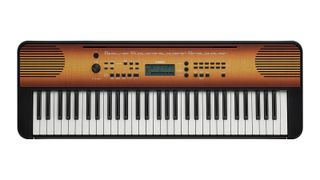
Available in two wood-effect finishes – dark walnut or maple – the PSR-E360 is one of Yamaha’s more-stylish keyboards (you can also get a plain black version). But there’s a lot of substance behind that smart exterior, with 384 voices, 130 auto-accompaniment styles and a 112-track Song Book on board.
There’s a nine-step Yamaha Education Suite lesson function, a recording feature (though it’s only good for 300 notes per track) and an auxiliary input for connecting an external audio source. You can even play alongside a friend, thanks to a duo mode that splits the keyboard into two halves, each with its own middle C.
Best for kids
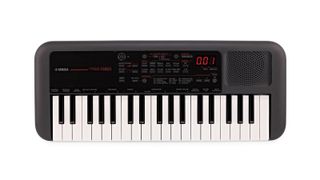
Something a little different, the PSS-A50 does not come with a standard auto-accompaniment feature. Instead, it has a phrase recorder, an arpeggiator and what Yamaha calls ‘motion effects’ – pitch, filter and modulation features that can be called up instantly by pressing a button.
Incredibly lightweight and portable, the PSS-A50 boasts a velocity-sensitive keyboard with 37 mini-keys, 40 decent sounds taken from Yamaha’s pricier E-series of keyboards, plus a USB-to-host connector that enables it to be used as a MIDI controller. The aforementioned arpeggiator is a useful addition, though each sound has its own default pattern, so if you change sounds the pattern will change too. This could be awkward if you wanted to audition the same pattern with different sounds.
Best for pianists
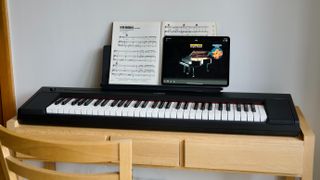
Yamaha’s piano-making pedigree is second to none, and this portable piano-style keyboard is a brilliant solution for kids to learn on, or for more mature pianists who don’t have room for a full-size piano.
The Piaggero NP-15 – like its larger, 76-key brother the Piaggero NP-35 – is a lightweight, synth-action keyboard that delivers a lifelike, AWM-stereo-sampled piano sound. There are only 15 voices on offer, and no auto-accompaniment, but if you want something you can just walk up to, switch on and play, you won’t find anything better for the money.
Also available in eye-catching white, the Piaggero NP-15 boasts a 7,000-note song recorder, enabling you to capture and play back your performances.
Read our full Yamaha Piaggero NP-15 review
Best for retro tones
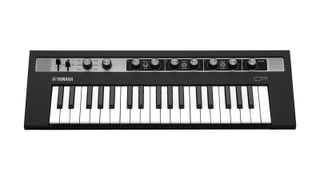
One of four retro-themed mini keyboards in the Reface range – the others being an FM synthesiser (the Reface DX), an organ (the Reface YC) and an analogue synthesizer (the Reface CS) – the Reface CP is a tiny, modern tribute to Yamaha’s 1970s electric pianos.
The feature set is impressive, with a bunch of retro keyboard sounds – including two types of Fender Rhodes electric piano, a Wurlitzer piano, a clavinet and a 1970s toy piano – vintage drive, tremolo, chorus, phaser, delay and reverb effects, plus 128-note polyphony.
There’s no auto-accompaniment, but the Reface CP sounds fantastic and is great fun to play – it even has rotary controls for effects and sound selection, just like the originals.
Buying advice

With a couple of exceptions, all of the models on our list fall into the ‘arranger keyboard’ category. An arranger keyboard is one that has built-in accompaniments you can play along to. These ‘backing tracks’ have traditionally had a whiff of the uncool about them – who could forget those clunky-sounding 1970s home organs played by pensioners? These days, though, the tiny digital musicians sequestered away in the bowels of your keyboard are pretty sophisticated, and although it’s still possible to sound like a Nintendo videogame intro screen if you really want to, that’s no longer the most likely outcome!
Here are some things to look out for when buying a Yamaha keyboard:
Voices
MusicRadar's got your back
Arranger keyboards usually come with a wide selection of voices (sounds), enabling you to reproduce practically any instrument you can think of, from acoustic guitars to zithers. Just bear in mind that quantity isn’t always a measure of quality – it’s better to have fewer usable voices than hundreds you’ll never bother with.
Styles
A style is a set of backing instruments and ready-made parts that play along with you as you hold down a note or chord with your left hand – so the more styles a keyboard has, the more choice you’ll have as to how your backing band plays. Modern keyboards can offer hundreds of styles, some of them pretty sophisticated and current-sounding.
Keys
Most of the keyboards on our list have 61 keys, offering a five-octave span that’s wide enough to play with both hands. Most will be velocity-sensitive, allowing for dynamic expression according to how hard or softly you play the keys. Some keyboards offer 76-key versions for the more advanced player, while other, smaller ’boards sport only 37 mini-keys for a more-portable or kid-friendly solution.
Super Articulation
Super Articulation is Yamaha’s term for a sampled sound that emulates the behaviour of a real instrument by including certain nuances you’d expect to hear. These might include string squeaks on an acoustic guitar voice, or the sound of a saxophone player taking a breath between notes. Previously the preserve of Yamaha’s higher-end keyboards, the technology has now started to trickle down into some of the less-expensive models.
Speakers / headphones
The majority of the instruments featured here have built-in speakers, so don’t need to be plugged into an amp or one of the best PA speakers in order for you to hear what you’re playing. All the keyboards in this guide also feature a headphones output for those all-important silent practice sessions.
Power supply
Since many of the keyboards featured here offer portability as a major selling point, many can be powered by AA batteries. However, most also enable you to use mains power via a standard power supply or USB.
How we choose

Here at MusicRadar, we are experts in our field, with many years of playing, creating and product testing between us. We live and breathe everything music gear related, and we draw on this knowledge and experience of using products in live, recording and rehearsal scenarios when selecting the products for our guides.
When choosing what we believe to be the best Yamaha keyboards available right now, we combine our hands-on experience, user reviews and testimonies and engage in lengthy discussions with our editorial colleagues to reach a consensus about the top products in any given category.
First and foremost, we are musicians, and we want other players to find the right product for them. So we take into careful consideration everything from budget to feature set, ease of use and durability to come up with a list of what we can safely say are the best Yamaha keyboards on the market right now.
Find out more about how we test music gear and services at MusicRadar.
Related buyer's guides
- Don't forget to pick up one of the best music stands
- These are the best piano VSTs
- Improve your playing with the best online piano lessons
- More of the best Yamaha keyboards
- Best electronic keyboards for every budget
- Our pick of the best keyboard stands for home and stage use
